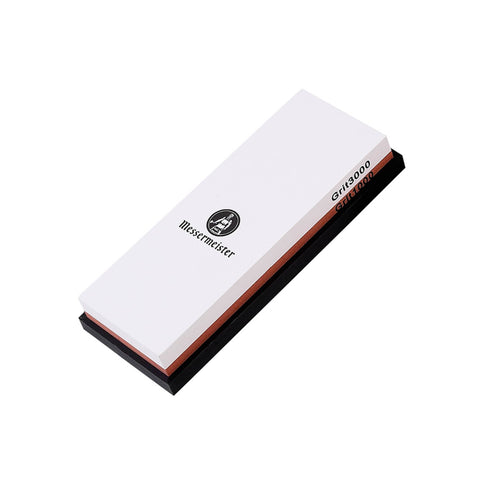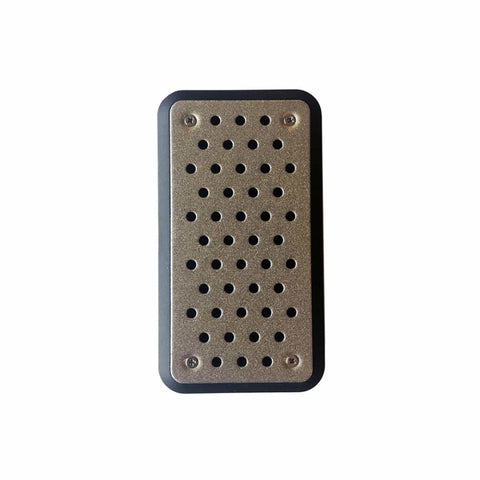How to Sharpen A Knife with a Whetstone

Knives are one of the most important tools in your kitchen, which means you’ll want to make sure they’re as sharp as possible at all times. Fortunately, proper knife care doesn’t have to be time-consuming or expensive, and you can use your whetstone to sharpen your knives at home whenever they begin to lose their edge. It might seem intimidating at first, but with practice you can easily sharpen your knives and make them ready for work again in no time!
Watch our comprehensive video on how to sharpen your knife with a whetstone below, or keep reading to learn more.
Browse our range of whetstones and knife sharpeners.
What is a whetstone?
A whetstone is a type of stone that is used to sharpen knives. It can be made from man-made or natural materials and comes in different grades.
The different types of whetstones
Whetstones come in a wide range of different grades or grits which refer to the size of the abrasive particles on the stone. The higher the grit size the more particles per square centimetre, so the finer the grit.
Lower grit stones are used for sharpening knives that are more blunt. Whereas higher grit stones are used to polish a knife either for more regular maintenance or for at the end of the sharpening process. This restoration stone has both a 400 grit and 1000 grit side. It is perfect for someone who doesn't sharpen their knives that regularly.
The maintenance whetstone is perfect for enthusiasts who sharpen their knives regularly. With both 1000 grits and 3000 grits, it's made for sharpening knives that aren't blunt but just dull.
This whetstone with 2000 and 5000 grits is for the knife nerd. You can use the 2000 grit side regularly to keep your knife sharp. Whereas the 5000 grit side is mainly for polishing your knife after sharping for a razor-sharp edge.
How to use a whetstone
Soaking the stone
To properly use a whetstone, it must first be soaked in water. The stone should be submerged in the water for 10-20 minutes before use, every time that you use it. The water acts as lubrication, allowing the knife to easily glide across the surface of the stone whilst sharpening, without too much friction.
Sharpening the knife
- Start by choosing your whetstone. If your knife is very blunt start with a 400 grit whetstone, or if you are regularly maintaining your knife start with a 1000 grit whetstone.
- Hold the knife in your dominate hand with the blade facing away from you. Place your fingertips on top of the blade face.
- Find the correct angle for your knife, matching the angle at which the edge of the knife is sharpened. See below for our tips on how to find this.
- Push the knife away from you without applying any pressure, and then pull it back towards you whilst applying pressure. You want to apply around four kilos of pressure for a blunt knife and around 1 to 2 kilos of pressure for a fairly dull knife.
- Count the number of strokes you use. For a dull knife you may want to do about 30 strokes, but for regular maintenance do around 10-15 strokes.
- Make sure you do the same amount of strokes across the length of the blade. Then flip the blade over to sharpen the other side, so the blade is facing towards you.
- Now apply pressure when you push the knife away from you and release the pressure when you pull it back towards your body.
- Complete the same number of strokes you did on the other side of the blade.
- Repeat this process moving up grits until you are happy with how sharp your knife is.
- Once finished, make sure you thoroughly wash your knife so that there aren't any residual metal particles.
Top tips for using a whetstone
How to find your sharpening angle
One way to get a feel for the correct sharpening angle when you are learning how to use a whetstone, is to place two pennies on your whetstone. Then place your knife on top and feel the angle it is sitting at. Hold your knife as if you were about to start sharpening, then remove the pennies before you start.
How to find the right amount of pressure to apply
You can use a standard kitchen scale to see how much pressure you are applying when sharpening your knife. Simply turn your kitchen scale on then gently push down with your fingers to get an understanding of how much 1 to 2 kilos of pressure feels like.
How to check where you are sharpening
Look at the edge of your blade before you start sharpening to see what angle the knife has previously been sharpened to. You should be able to see a slight bevel. Mark along this bevel with a sharpie, then start sharpening. Once you have sharpened one length of your blade you shouldn't be able to see any more sharpie. If you can, then you know you need to sharpen that section more thoroughly. Then use nail polish remover to remove any residual sharpie once finished.
Cleaning and maintaining your whetstone
It's important to clean the whetstone before and after you sharpen your knives. This ensures that you don't get any metal residue or other materials on your knives. To do this, soak the stone in water for about 10 minutes, scrub it with a brush, and then rinse it under running water. Once you've done that, dry off the stone with a towel and rub it down with mineral oil.
To keep your whetstone in top condition, it may be worthwhile to purchase a diamond whetstone flattener. After longer periods of use your whetstone may develop an irregular or uneven surface with a slight dip, where you have added more pressure when sharpening. A flattener is used to maintain your stones flat, level surface so you can easily sharpen your knives. To see how the flattener is used watch the video above.





